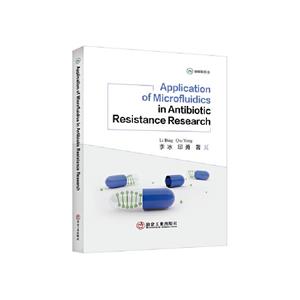
作者:李冰
页数:186
出版社:冶金工业出版社
出版日期:2023
ISBN:9787502496302
电子书格式:pdf/epub/txt
内容简介
AbstractThebookfocusesontheapplicationofmicrofluidictechnologyintheresearchofantibioticresistance.Itincludestheuseofmicrofluidicchipstoanalyzebacterialresistancecharacteristicsandtovisualizethespreadofantibioticresistancegenes(ARGs)atthesingle-celllevel.Additionally,theauthorstriedtoexploretheimpactofenvironmentalpollutants,suchasantibiotics,heavymetals,andmicroplastics,onthespreadofARGs.Thisbookisintendedtoserveasavaluablereferenceforresearchersinthefieldsofenvironmentalscienceandmicrobiology.Itoffersinsightsintothestudyofantibioticresistanceanditsinteractionwithenvironmentalconditions,andprovidesusefulinformationforthoseinvolvedinrelatedresearchendeavors.
目录
Chapter 1 Microfluidics for rapid antibiotic susceptibility testing 11.1 Microfluidic platform design 21.1.1 System design of microfluidic platform 2 1.1.2 Construction of microfluidic platform 31.1.3 Preparation of microfluidic agarose chip 41.1.4 Characterization of concentration gradient on the chip 81.2 Observation and data processing 91.2.1 Image processing and characterization for bacterial quantification 91.2.2 Microbial counting and growth model 101.2.3 Calculation of bacterial growth rate 111.2.4 Microbe inhibition dynamic model 111.3 Comparison of bacterial culture by chips and traditional methods 111.3.1 Growth of Escherichia coli in the chip and well plate 111.3.2 Growth of ammonia-oxidizing bacteria in the chips and shaking flasks 141.4 Amoxicillin susceptibility testing of different bacterial strains 161.4.1 Escherichia coli 161.4.2 Nitrosomonas europaea 221.4.3 Comamonas denitrifican 25References 29Chapter 2 Bacterial persistence to antibiotics revealed by single cell t















